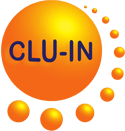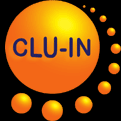Search Result
| Return to Search | Return to Results |
MULTIMETHOD ANALYSIS OF NSZD AND ENHANCED SZD BY SOLAR-POWERED BIOVENTING AT THE GUADALUPE RESTORATION PROJECTMcAlexander, B., E.J. Daniels, N. Sihota, J. Eichert, and C. Smith. Groundwater Monitoring & Remediation 44(2):72-85(2024)
An approach combining natural source zone depletion (NSZD) measurements and monitoring technology was applied at the Guadalupe Restoration Project to quantify biodegradation enhancements and sustainably increase the rate of source zone depletion. NSZD quantification was conducted using CO2 efflux measurements and subsurface temperature profiling. Results fell within the range of previously reported estimates based on soil-gas profiling in the early 2000s, demonstrating the viability of the new methods. Data collection methods were then deployed during pilot testing of solar-powered bioventing. The system used seven 400-W solar panels to power a regenerative blower that delivered ~0.85 m3/minute (30 cfm) air to the LNAPL-impacted vadose soil near the interface with the groundwater table. Soil-gas data indicated an upward fanning of injected air toward ground surface. Elevated temperature due to hydrocarbon oxidation yielded an ~10.2 kg/day source depletion rate above the baseline NSZD mass removal rate over a ~30 m (100 ft) radius of influence, which aligned well with an 8.2 kg/day rate estimated from CO2 efflux measurements. Introducing O2 via bioventing substantially increased the LNAPL biodegradation rate from baseline NSZD processes by almost an order of magnitude. Results demonstrate that site management can proceed along a sequenced program that began with aggressive hydraulic recovery of hydrocarbon product, transitions to enhanced SZD in areas with poorly recoverable LNAPL, and then to NSZD without intervention to address residual LNAPL across the full footprint of the LNAPL bodies. https://ngwa.onlinelibrary.wiley.com/doi/epdf/10.1111/gwmr.12647
The Technology Innovation News Survey welcomes your comments and
suggestions, as well as information about errors for correction. Please
contact Michael Adam of the U.S. EPA Office of Superfund Remediation
and Technology Innovation at adam.michael@epa.gov or (703) 603-9915
with any comments, suggestions, or corrections.
Mention of non-EPA documents, presentations, or papers does not constitute a U.S. EPA endorsement of their contents, only an acknowledgment that they exist and may be relevant to the Technology Innovation News Survey audience.





